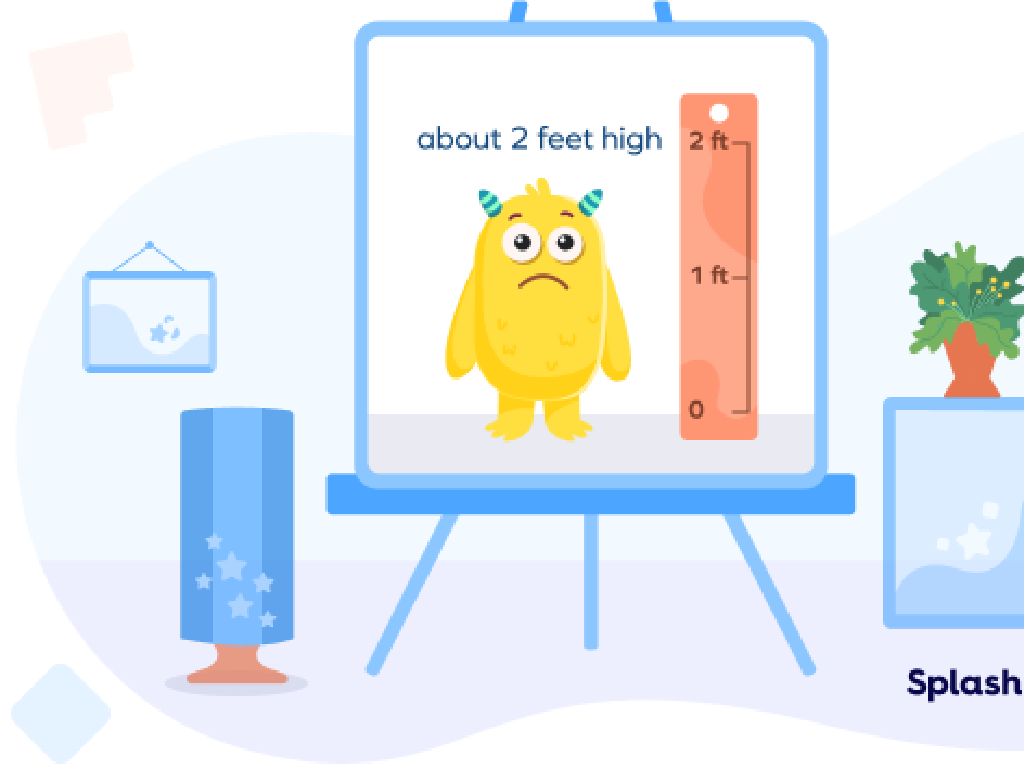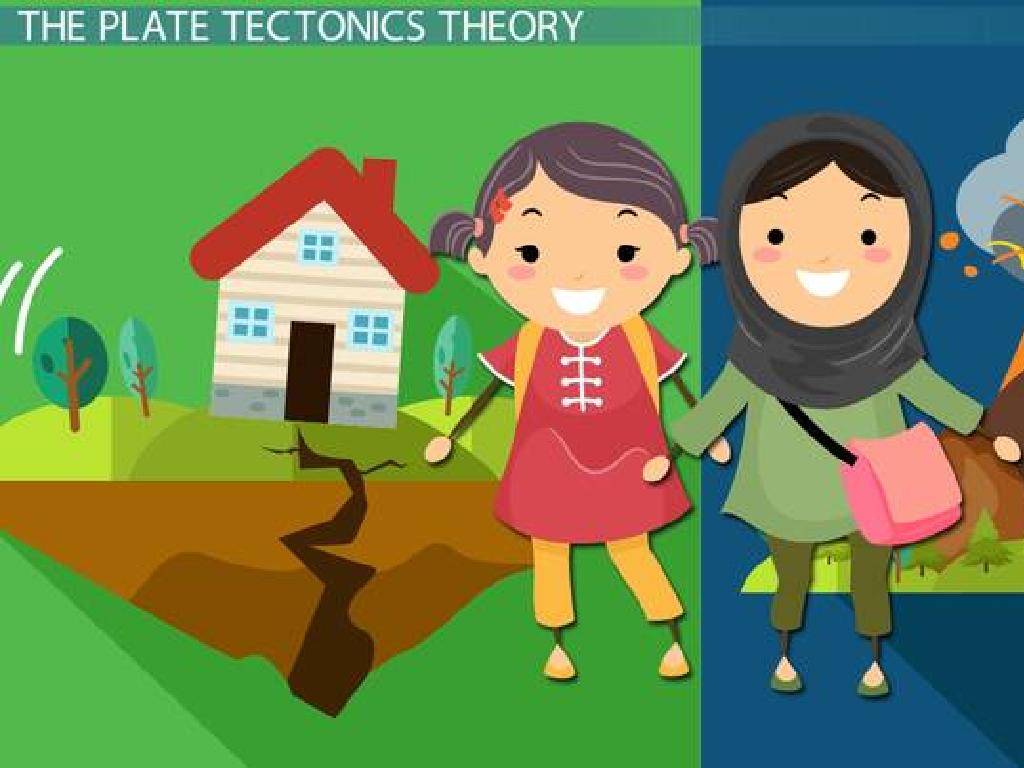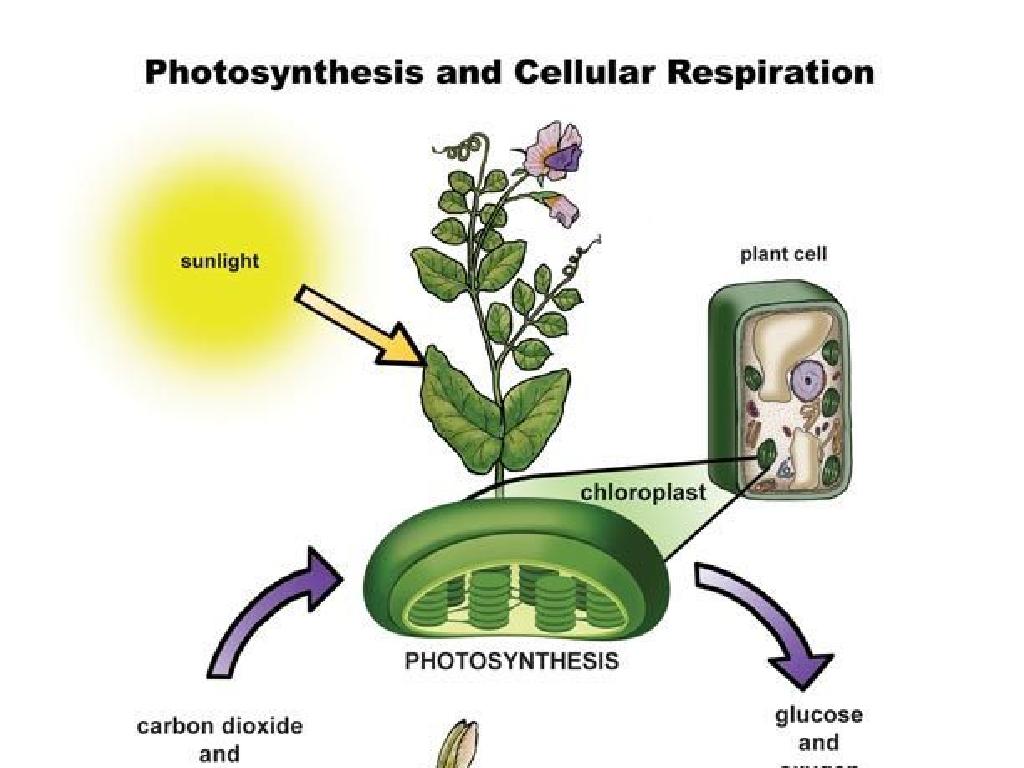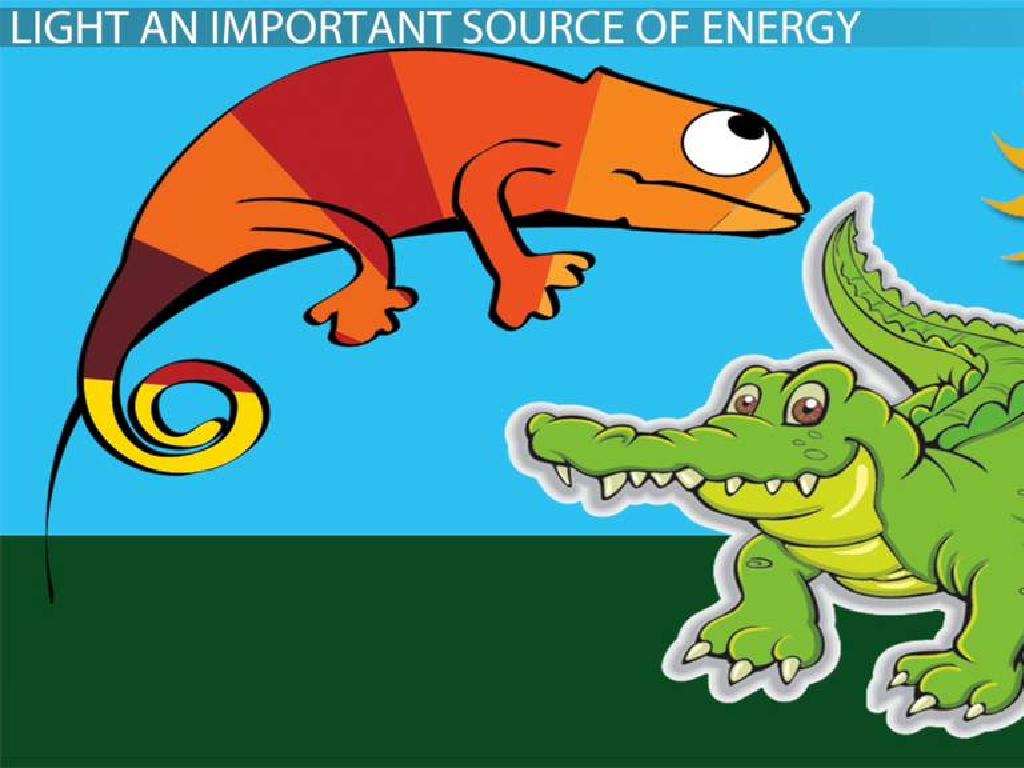Body Parts And Their Functions
Subject: Science
Grade: First grade
Topic: Animals
Please LOG IN to download the presentation. Access is available to registered users only.
View More Content
Welcome to Our Body!
– Greetings and today’s adventure
– Our bodies and animal bodies
– We’ll explore how our bodies are similar and different from animals
– Body parts and their roles
– Each part has a special job, like hands for grabbing
– Importance of body knowledge
– Knowing about body parts helps us understand how we move and grow
|
Begin the class with a warm welcome and introduce the topic of body parts and their functions, emphasizing the comparison between human and animal bodies. Explain that understanding the different parts of the body and their functions is essential for recognizing how living beings move, interact with their environment, and perform daily activities. Highlight the importance of this knowledge in appreciating the complexity and wonder of living organisms. Engage the students by asking them to name some body parts and discuss their functions. This will set the stage for a more detailed exploration of the topic in the following slides.
Head, Shoulders, Knees, and Toes: Animal Edition
– Sing along: Head, Shoulders, Knees, and Toes
– Find body parts on us and animals
– Point to your head, shoulders, knees, toes, then to those on an animal picture
– Discuss what each part does
– Heads help think, shoulders lift, knees bend, toes balance
– Why animals have similar parts
– Animals have body parts like us for moving, eating, and thinking
|
This slide is designed to be interactive and engaging for first graders. Start with the ‘Head, Shoulders, Knees, and Toes’ song to get the children moving and involved. Then, have them identify these body parts on themselves and on a picture of an animal, such as a dog or a cat. Discuss the function of each body part, emphasizing how they help us move, think, and interact with the world. Highlight the similarities between human and animal body parts to help students understand the concept of anatomy and its functions across different species. Encourage the children to ask questions and share their thoughts on why animals have similar body parts to ours.
Our Amazing Senses
– Discover the five senses
– Sight, hearing, smell, taste, touch
– Body parts related to each sense
– Eyes see, Ears hear, Nose smells, Tongue tastes, Skin feels
– Examples of senses in action
– Watching a butterfly (sight), Listening to music (hearing)
– Senses help us understand the world
|
This slide introduces the concept of the five senses as a fundamental way we interact with the world. Begin by explaining each sense and the associated body part: eyes for seeing, ears for hearing, nose for smelling, tongue for tasting, and skin for touching. Provide simple, relatable examples for each sense, such as seeing a colorful butterfly or hearing a beautiful song, to illustrate how we use our senses in everyday life. Emphasize that our senses work together to help us understand and respond to our environment. Encourage the students to think of more examples and to share how they use their senses daily.
Animal Body Parts and Their Functions
– Comparing human and animal parts
– Like our arms, a monkey uses limbs to swing
– Animals use parts for different tasks
– Elephants use trunks to drink, while birds use beaks to eat
– Examples of unique body part uses
– Ducks have webbed feet for swimming, bats have wings to fly
|
This slide aims to teach students about the similarities and differences between human and animal body parts, and how animals use their body parts to perform various tasks. Start by comparing familiar human body parts with those of animals, such as comparing our hands to a monkey’s limbs. Discuss the various functions of animal body parts, like how elephants use their trunks to drink water and birds use their beaks to pick up food. Show examples of unique adaptations, such as how ducks have webbed feet that help them swim efficiently, and how bats have wings that enable them to fly. Encourage students to think of other animals and how their body parts help them survive in their environments.
Body Parts Common to Kids and Animals
– Identify shared body parts
– Eyes, ears, mouth, and legs are some parts we share with animals.
– Functions of these body parts
– We use our legs to walk, and so do many animals!
– Examples of similar animal parts
– A cat’s eyes and a child’s eyes both see the world around them.
– Understanding our similarities
|
This slide aims to teach students about the similarities between human body parts and those of animals, fostering a connection with the animal kingdom. Start by identifying common body parts such as eyes, ears, mouth, and legs. Discuss the functions of these parts, like how legs are used for movement in both humans and animals. Provide examples like how a cat’s eyes function similarly to ours. Encourage students to think about how these similarities help us relate to animals and understand their behavior and needs. This will help students appreciate the commonalities we share with other living creatures.
Unique Animal Body Parts
– Explore unique animal parts
– Like a giraffe’s long neck
– Why do animals have them?
– To survive & adapt in their habitats
– How do parts help animals?
– A duck’s webbed feet help it swim
– Examples of unique parts
|
This slide aims to spark curiosity about the diversity of animal body parts and their functions. Start by showing pictures of animals with unique features, such as the long neck of a giraffe or the webbed feet of a duck. Explain that these body parts help animals survive in their environments. For example, a giraffe’s neck allows it to reach high leaves, and a duck’s webbed feet make it an excellent swimmer. Encourage the students to think of other animals with distinctive body parts and discuss how these might help the animals in their daily lives. This will help students understand the concept of adaptation in a simple and relatable way.
Let’s Move Like Animals!
– Act out animal movements
– Learn how body parts function
– How do different parts help animals move?
– Discuss each animal’s movement
– Why does a rabbit hop or a bird flap wings?
– Share what we’ve learned
|
This slide introduces a class activity where students will imitate the movements of different animals to understand the function of various body parts. Encourage the children to think about how each body part of an animal helps it move in a unique way. For example, a rabbit uses its strong hind legs to hop and a bird uses its wings to fly. After the activity, facilitate a discussion where students can share their experiences and what they’ve learned about animal movement. This will help them connect the physical activity to the science concept of body part functions. Possible activities: hopping like a rabbit, flapping arms like a bird, or walking steadily like an elephant.
Body Parts Review & Fun Facts
– Recap body parts & functions
– Fun facts about bodies
– Did you know? Giraffes have the same number of neck bones as humans!
– Interactive Q&A session
– Engage with amazing body trivia
– Learn how starfish can regrow their arms!
|
This slide aims to consolidate the students’ knowledge about body parts and their functions through a review. After the review, share intriguing facts about human and animal anatomy that will capture the students’ imagination, such as the fact that both giraffes and humans have seven vertebrae in their necks. Prepare for an interactive Q&A session where students can ask questions and get answers, reinforcing their understanding. Encourage them to think of questions during the review. The trivia part of the session should be engaging, with facts like the regenerative abilities of starfish, which can spark curiosity and further discussion.
Draw Your Favorite Animal
– Class activity: Drawing time!
– Draw your favorite animal
– Label the animal’s body parts
– Legs for walking, ears for hearing
– Describe the functions of each part
– Mouth for eating, wings for flying
|
This slide introduces a fun and interactive class activity aimed at helping first-grade students understand the functions of different body parts in animals. Provide each student with drawing materials and ask them to draw their favorite animal. Encourage creativity and expression. Once they have completed their drawings, assist them in labeling each body part, such as legs, ears, mouth, and wings. Discuss the function of each labeled part, for example, legs are for walking or running, ears are for hearing, the mouth is for eating, and wings are for flying. This activity will help students associate body parts with their functions and understand that different animals have different body parts that help them survive. Possible variations of the activity could include group work, where students compare the functions of similar body parts in different animals, or a gallery walk, where students can view and discuss each other’s work.
Show and Tell: Animal Body Parts
– Present your animal drawings
– Discuss the body parts and functions
– For example, wings for flying or fins for swimming
– Talk about what each part does
– Like how legs are for walking or jumping
– Give every drawing positive feedback
|
This slide is for a class activity where each student will present a drawing of an animal they have made. As they present, they should discuss the different body parts of the animal and explain the function of each part. Encourage the students to think about why each body part is important for the animal’s survival. For example, how wings help birds fly or how fins help fish swim. It’s crucial to create a supportive atmosphere where every student’s effort is acknowledged and praised. This activity will help students understand the concept of adaptation and the role of different body parts in animals’ lives. Possible activities could include drawing different animals, matching body parts to their functions, or acting out animal movements.
Our Amazing Body Parts!
– Recap of today’s learning
– We learned about different body parts and their functions.
– Body parts are daily helpers
– Our eyes see, ears hear, and legs walk.
– Appreciation for participation
– Celebrate our body’s creativity
|
As we conclude today’s lesson on body parts and their functions, it’s important to summarize the key points to reinforce the students’ understanding. Remind them of how each body part has a special function that helps us every day, like how our eyes help us see the world, our ears let us hear sounds, and our legs take us where we want to go. Express gratitude for the students’ active participation and for the creative ways they thought about their body parts during the lesson. This will help them appreciate their own bodies and understand the importance of taking care of them. Encourage them to share what they’ve learned with their families at home.






